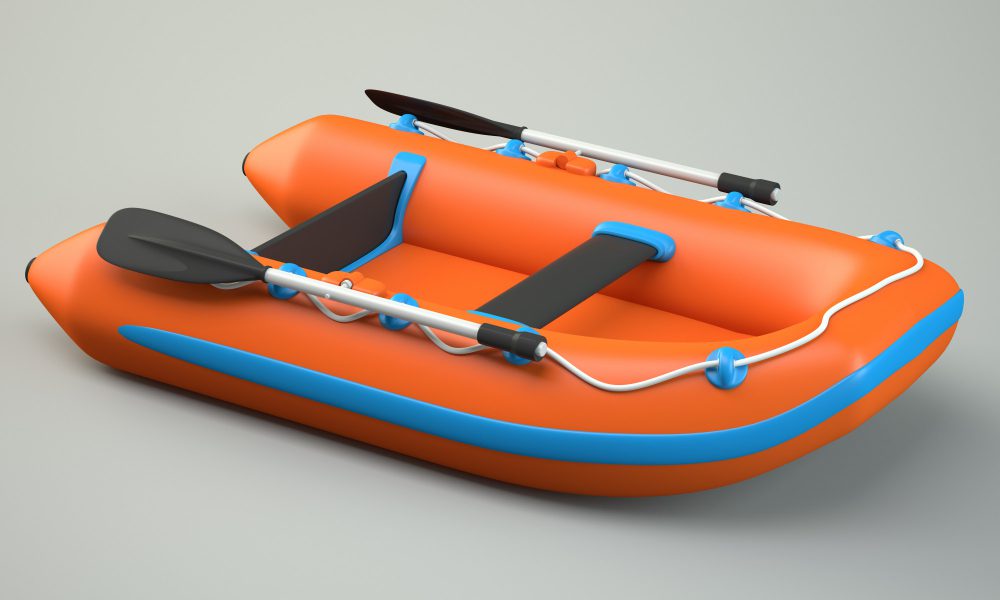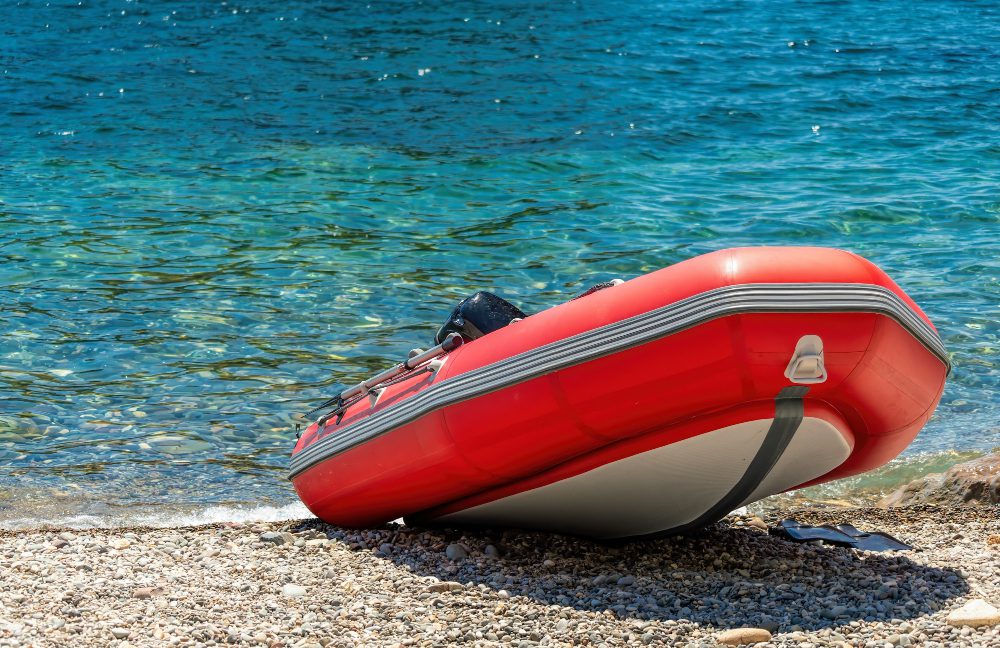What is a tiny motor boat called?
A tiny motor boat is commonly referred to as a dinghy. Dinghies are small, open boats that are typically powered by an outboard motor. They are specifically designed for short trips, inland waterways, or as tender boats for larger vessels.
The Characteristics of a Dinghy
Dinghies are known for their compact size and lightweight construction, making them easy to handle and transport. They are usually made of materials like fiberglass, aluminum, or inflatable fabrics such as PVC or Hypalon.
One of the distinguishing features of a dinghy is its stability. They often have a wide beam and a flat bottom, allowing for better balance and maneuverability even in rough waters. These boats are designed to be versatile and can be used for various activities such as fishing, exploring coastal areas, or simply cruising around on calm lakes or rivers.
Common Uses of Dinghies
Dinghies serve a range of purposes and are popular among different boating enthusiasts. Some common uses of dinghies include:
- Recreational Boating: Dinghies are perfect for recreational boating activities such as picnicking, swimming, or leisurely exploring nearby shores.
- Fishing: Many anglers prefer dinghies for their maneuverability, allowing them to navigate into tight spots where larger boats cannot reach.
- Tender Boat: Dinghies are often used as tender boats to ferry crew members or supplies between a larger vessel and the shore.
- Sailing: Some dinghies are specifically designed to be used as sailboats, with an added rigging system for sailing enthusiasts to enjoy.
Overall, dinghies provide an affordable and convenient option for those looking to explore the waterways, engage in recreational activities, or access their main boat. Their small size also makes them ideal for individuals who don’t have a large storage area or trailer to transport a bigger boat.
Tiny Motor Boats vs. Other Types of Boats
While dinghies are commonly referred to as tiny motor boats, it’s important to note that there are other types of small boats as well. Let’s take a look at the key differences:
| Type of Boat | Description |
|---|---|
| Dinghies | Small, open boats powered by outboard motors; designed for short trips, inland waterways, or as tender boats. |
| Skiffs | Flat-bottomed boats with a sharp bow; commonly used for fishing or shallow-water transportation. |
| Canoes | Narrow, lightweight boats propelled by paddles; traditionally made from wood or fiberglass. |
| Kayaks | Narrow, enclosed boats where the paddler sits with legs extended forward; primarily used for recreational purposes or water sports. |
“Dinghies offer a great combination of versatility, convenience, and affordability, making them a popular choice for boating enthusiasts of all kinds.” – Boating Magazine
What is a very small sail boat called?
A very small sailboat, typically designed for one or two people, is called a dinghy. Dinghies are popular for recreational sailing, racing, and exploring shallow waters. They are lightweight, easy to maneuver, and often used for training beginners in sailing.
Types of Dinghies
There are several types of dinghies, each with its own characteristics and intended use:
- Pram Dinghy: A small, square-ended dinghy that provides stability and is suitable for beginners.
- Dory Dinghy: A traditional and versatile dinghy with a flat bottom and high sides.
- Skiff: A lightweight dinghy with a narrow hull, commonly used for racing.
- Yawl Dinghy: A dinghy with two masts, typically used for cruising and long-distance sailing.
The Advantages of Dinghies
Dinghies offer several advantages over larger sailboats:
- Easy to transport and store due to their small size and lightweight construction.
- Require minimal maintenance and can be easily launched and retrieved from the water.
- Provide a more intimate and immersive sailing experience, allowing you to feel closer to the water.
- Perfect for solo adventures or sailing with a small crew.
As a popular choice among sailors, dinghies are also widely used for racing. Their nimble nature and responsiveness make them thrilling to sail competitively.
Notable Dinghy Races
Some of the most famous dinghy races include:
- The Sydney to Hobart Yacht Race: This annual race in Australia features various categories of boats, including dinghies.
- The Round the Island Race: A popular race around the Isle of Wight in the UK, attracting numerous dinghy competitors.
- The International Moth World Championship: A high-speed foiling dinghy race that showcases cutting-edge technology.
“Dinghies are like small gems on the water, offering an exciting and personalized sailing experience.”
If you’re interested in trying out sailing or looking for a new adventure on the water, a dinghy could be the perfect choice. Its small size, maneuverability, and versatility make it ideal for beginners and experienced sailors alike.
What is a single mast boat called?
Single mast boats, also known as monohull boats, are a popular type of sailing vessel. These boats are equipped with a single mast, which is a vertical pole that supports the sail(s) and rigging. The single mast design is commonly used in a variety of sailing vessels, including small recreational boats, racing yachts, and larger commercial ships.
Monohull vs. Multihull
One key distinction to understand is the difference between monohull and multihull boats. Monohull boats have a single hull or body, while multihull boats have multiple hulls. Single mast boats fall into the category of monohull boats, as they feature a single hull with one mast.
Popular Types of Single Mast Boats
There are various types of single mast boats, each designed for specific purposes and preferences. Some popular examples include:
- Sloop: A sloop is a single-masted sailboat with a fore-and-aft rig configuration, meaning the main sail is located aft of the mast.
- Cutter: A cutter is similar to a sloop but has an additional smaller mast, known as a cutter rig, located forward of the main mast.
- Ketch: A ketch features two masts, with the main mast taller than the mizzen mast. The mizzen mast is located forward of the rudderpost.
- Yawl: A yawl is similar to a ketch but has a shorter mizzen mast that is located aft of the rudderpost.
Advantages of Single Mast Boats
Single mast boats offer several advantages:
- They are generally easier to handle and maneuver compared to multihull boats.
- They can sail closer to the wind, allowing for better upwind performance.
- They offer a traditional sailing experience.
“Sailing a single mast boat is a fulfilling experience, allowing you to connect with the wind and sea in a unique way.” – Sailor enthusiast
What is a small two masted sailing vessel called?
A small two masted sailing vessel is commonly known as a ketch. The term “ketch” refers to a type of sailboat with two masts, typically a taller main mast and a shorter mizzen mast located forward of the rudder post. The mizzen mast is smaller and positioned closer to the stern (back) of the boat.
Characteristics of a Ketch
A ketch rig is characterized by its versatile sail plan, which offers several advantages:
- Balance and stability: The presence of two masts allows for a better distribution of sail area, promoting balance and stability in varying wind conditions.
- Easy handling: The smaller size of the mizzen mast makes it easier to handle and control, especially when sailing short-handed or in adverse weather.
- Reduced sail size: The total sail area is divided between the main and mizzen sails, resulting in smaller individual sails that are more manageable in strong winds.
Uses of a Ketch
Ketches have been used for various purposes throughout history:
- Recreational sailing: Many modern ketches are designed for leisure cruising and offshore sailing, offering comfortable accommodations and efficient performance.
- Fishing: In the past, ketches were utilized for commercial fishing due to their versatility and stability in rough seas.
- Traditional trade: In earlier centuries, ketches were commonly employed as coastal trading vessels, transporting goods and supplies along coastlines.
Notable Ketches
Several famous ketches have left their mark in maritime history, including:
Example 1: The “Tahiti Ketch” was a notable sailboat used by Joshua Slocum during his solo circumnavigation of the world in the late 19th century.
Example 2: The “Pride of Baltimore,” a replica ketch built in the 1970s, served as a goodwill ambassador for the city of Baltimore, showcasing traditional maritime skills.
In Conclusion
The small two masted sailing vessel known as a ketch offers a versatile sail plan, balance, and stability. Whether used for recreational sailing, fishing, or trade, ketches have played an important role in maritime history. Their unique design and characteristics make them a distinct and interesting vessel within the sailing community.
What is a 3 mast ship called?
Introduction
A three-masted ship is a type of sailing vessel that features three masts, or vertical poles, on which sails are hung. These ships have a rich history and have been used for various purposes throughout time. The terminology for a three-masted ship varies, depending on its specific design and usage.
The Different Names for Three-Masted Ships
Three-masted ships go by different names depending on their configuration and purpose:
- Schooner: A schooner is a type of three-masted ship where the foremast (the front mast) is shorter than the others. This design allows for a great variety of sail combinations, making schooners highly adaptable.
- Barque or Bark: A barque is another type of three-masted ship where the foremast is the shortest, followed by the mainmast, and finally the mizzenmast (the rear mast). Barques were popular in the late 19th and early 20th centuries for their versatility and efficiency.
- Barquentine: A barquentine is similar to a barque, but with a slightly different configuration. While it also has three masts, the foremast is square-rigged, while the other two masts are fore-and-aft rigged. This design offers excellent maneuverability.
- Full-rigged Ship: A full-rigged ship, often simply called a “ship,” features three equally tall masts. All three masts are square-rigged, meaning they have square-shaped sails. This design provides maximum sail area and is suitable for long ocean voyages.
Historical Significance
Three-masted ships played a vital role in maritime history. They were used for exploration, trade, and warfare, and their designs evolved over time to meet the changing needs of sailors and merchants. These ships were often impressive in size, with multiple decks and intricate rigging systems.
“The sight of a three-masted ship gracefully gliding through the water is a truly awe-inspiring experience.”
Notable Three-Masted Ships
Throughout history, numerous famous three-masted ships have left their mark. Some notable examples include:
- Santa Maria: The flagship of Christopher Columbus’s first voyage to the Americas in 1492 was a three-masted carrack named Santa Maria.
- USS Constitution: Also known as “Old Ironsides,” this three-masted frigate was commissioned by the United States Navy in 1797 and is one of the oldest commissioned warships still afloat.
- Cutty Sark: This legendary clipper ship, launched in 1869, was a three-masted vessel famous for its speed and elegance during the age of sail.
Conclusion
Whether you are a seasoned sailor or a beginner, understanding the different types of boats and their unique characteristics is essential. Single mast boats offer simplicity, efficiency, and versatility, making them a popular choice among sailors around the world. So, the next time you spot a boat with a single mast, you’ll know it belongs to the monohull family.
Three-masted ships hold a special place in maritime history. Whether they are called schooners, barques, barquentines, or full-rigged ships, these vessels represent the art and science of sailing. Their graceful appearance and historical significance continue to capture the imagination of people around the world.



